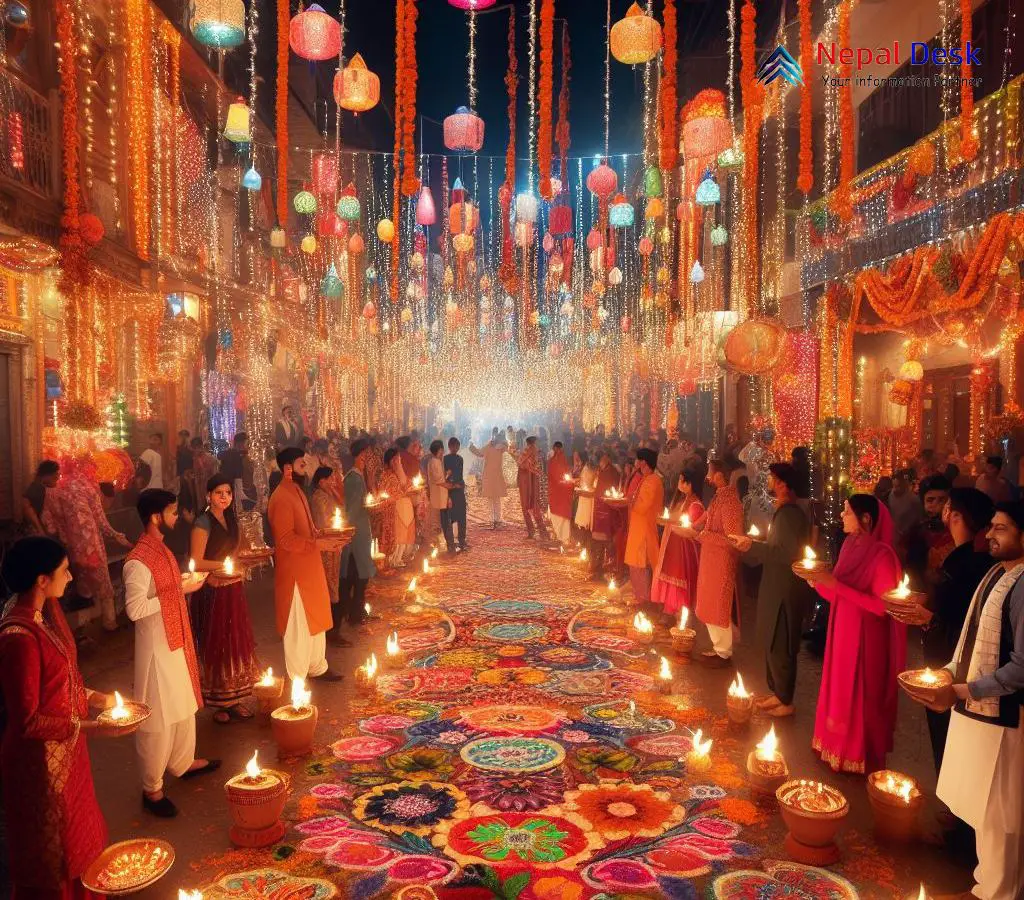Tihar, A Hindu's Festival of Lights Over Five Days, Starts Today
Published Date

Published Date
Celebrate Tihar, a vibrant five-day Hindu festival, honoring animals & deities, culminating in Bhai Tika, a joyous tribute to sibling bonds and culture.
⏱ 2 min read
The festive season in Nepal and among Hindu people around the world continues after Dashain. From today, the second most important festival of Hindus, Tihar, starts. Also known as Deepawali or Yamapanchak or Diwali, Tihar is an important Hindu festival primarily celebrated in Nepal and by Nepali Hindu communities. It is a festival of lights. Typically occurring in October or November, this five-day event carries immense cultural and religious significance, with each day devoted to the veneration of different animals and deities.
On the first day, Kaag (Crow) Tihar, crows are offered food as a gesture of respect for their role as messengers of Yama, the god of death in Hindu mythology. Devotees provide sweets, grains, and other offerings to crows on banana leaves.
Kukur (Dog) Tihar, on the second day, honors dogs and their loyalty as protectors. Dogs receive tikas (vermilion markings), garlands, and special treats in acknowledgment of the cherished bond between humans and dogs.
Gai (Cow) Tihar, celebrated on the third day, pays tribute to cows as symbols of wealth and prosperity. The same evening marks Laxmi Puja, when Goddess Laxmi, the deity of fortune, is worshipped through elaborate home decorations, oil lamps, and candle displays. It is believed Goddess Laxmi visits well-lit, meticulously cleaned homes.
On the fourth day, Govardhan (Ox) Puja, celebrates oxen and their agricultural labor. Mha Puja, mainly celebrated by the Newari communities, is also observed on this day, with individuals performing self-purification rituals. It is a worship of one's own body. Families engage in cultural activities and prepare "sel roti," a special sweet dish.
Bhai Tika on the fifth day commemorates sibling bonds, with sisters conducting tika rituals to safeguard their brothers and presenting them with garlands and sweets. Brothers offer gifts and pledge protection for their sisters.
Among all else, one other highlighted celebration during Tihar is Deusi Bhailo. In this, during the Tihar festival, people sing traditional folk songs and dance to them by going from one house to another, especially during the nighttime after the sun goes down. The house owner also involves themselves in the celebration and gives various gifts and money.
With its myriad of rituals, cultural events, feasts, and exchange of goodwill, Tihar is an animated and joyous festival that fosters community solidarity and strengthens family ties, making it one of Nepal's most cherished celebrations.
